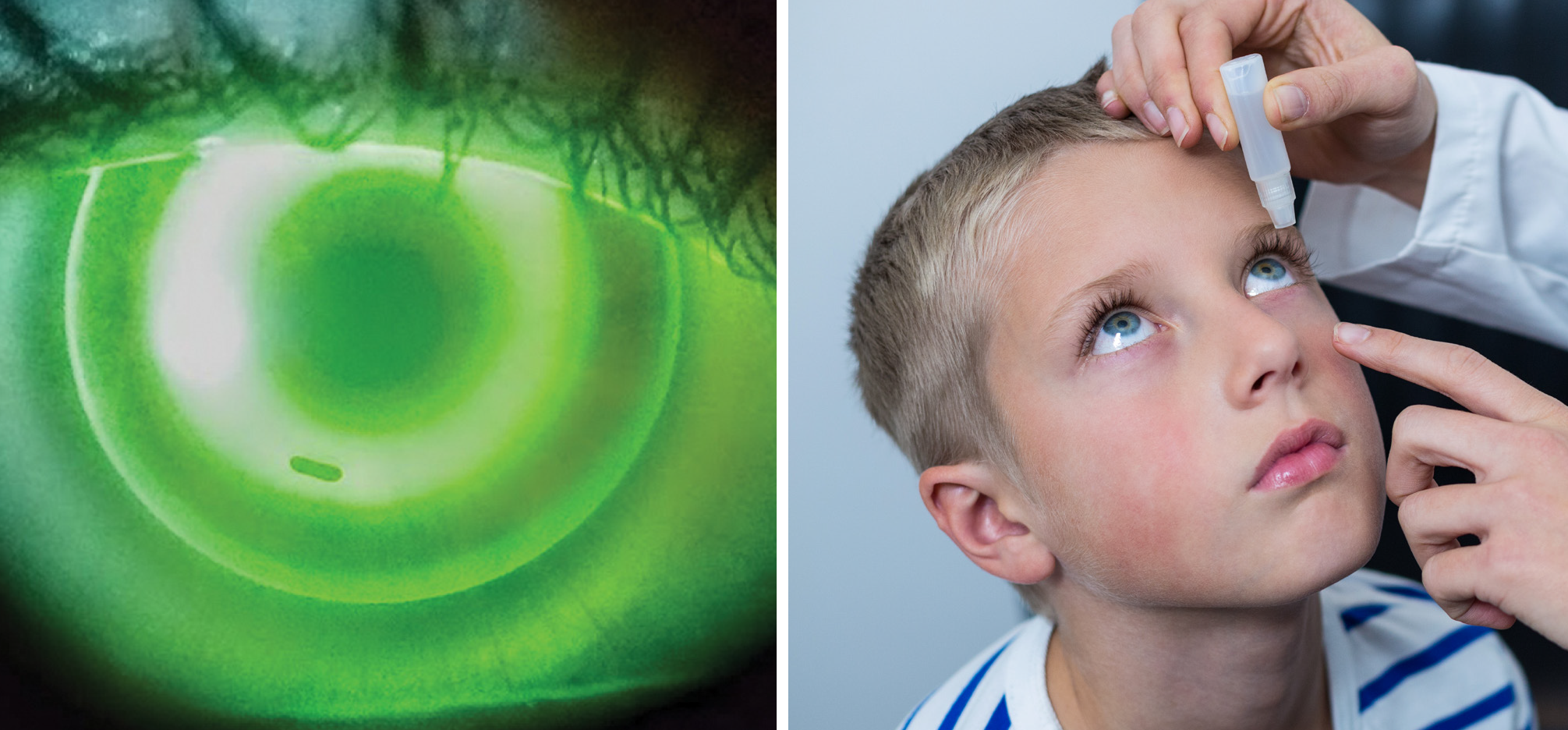 |
| Adding atropine to a patient already undergoing orthokeratology seems to enhance the treatment response for about 18 months. Click image to enlarge. |
Finding ways to combat the myopia epidemic is an increasingly hot area of research, given the millions of children around the world in need of interventional to curtail progression. Orthokeratology lenses and low-dose atropine have shown promise in numerous studies, though younger children still progress despite these interventions. In a recent study published in Ophthalmology and Therapy, researchers investigated whether combining the two treatments would result in greater suppression of axial length (AL) elongation. They found that it did, but only for a short period of time.
The researchers retrospectively analyzed medical records of children aged seven to 14 who were treated using either ortho-K monotherapy (n=68) or 0.01% atropine with ortho-K simultaneously (n=68). Children underwent baseline testing and AL measurement every six months. Both groups had similar baseline characteristics.
The researchers reported that both groups experienced significant increases in AL over time. At two years, the combination therapy group demonstrated significantly less AL change than the ortho-K group: 0.28 vs. 0.44, a 36% difference.
The add-on effect of 0.01% atropine with ortho-K occurred only during the first 1.5 years. Compared with monotherapy, significant AL elongation suppression was seen in the combo group during months zero to six; six to 12; and 12 to 18 (suppression rates 62.5%, 33.3%, 38.5%, respectively) but not in the 18 to 24-month period. The greatest differences in treatment efficacy were seen in younger children, and regression analyses showed that treatment effect decreased with each year of age, with an approximately 0.06mm increased retardation in AL elongation in the combo group.
The researchers suggested that this may happen because “the muscarinic receptors might be exhausted after a long time of binding with atropine, causing a reduction in efficacy.” Based on statistical models of older children, they hypothesized that the combined effect of atropine and ortho-K “would decrease as age increased and might not be significant in children older than 10.”
From the results, they concluded that “the application and duration of combination therapy in clinical practice should also consider children’s age. However, to find the exact attenuate time, more frequent follow-up and longer observation time research are warranted.”
Du L, Chen J, Ding L, et al. Add-on effect of 0.01% atropine in orthokeratology wearers for myopia control in children: a 2-year retrospective study. Opthhalmol Ther 2023. [Epub July 5, 2023]. |

